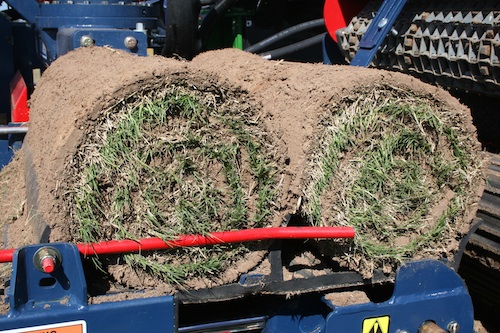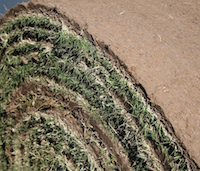A lush sodded-turfgrass lawn can be the envy of the neighborhood, but people who want to install sod lawns next year can expect to pay more, according to a Georgia Urban Ag Council ancillary survey.
Eleven producers participated in the September telephone survey, representing farms ranging from less than 300 acres to more than 900 acres.
The survey results help landscape companies bid jobs for 2012. It also responded to scattered reports of currently low inventory, elevated prices and the likelihood of limited supply next year, said Clint Waltz, turfgrass specialist with University of Georgia Cooperative Extension.
The big three
“Considering the ‘big 3’ species, bermudagrass, centipedegrass and zoysiagrass, most growers anticipate increased prices in 2012,” he said. “From this survey it’s evident that turfgrass prices are rising on the two species in greatest production.”
All the surveyed producers grow bermudagrass. Forty-six percent rated their fall inventory as adequate to excellent. Moving into 2012, 55 percent projected having less than adequate supplies.
Of the 11 producers surveyed, eight grow centipedegrass. Eighty-eight percent have adequate to excellent inventory. Thirteen percent of the centipedegrass growers anticipate a shortage during 2012.
This fall, 60 percent of all zoysiagrass producers surveyed project a shortage of grass with 67 percent of the larger growers, or those growing more than 600 acres, projecting a shortage.
St. Augustinegrass is grown by three of the 11 producers surveyed. Of those, 67 percent report adequate supply.
All tall fescue producers reported adequate inventory, which continues a seven-year trend.
On-the-farm prices up
When it comes to price, the on-the-farm fall 2011 prices for bermudagrass, zoysiagrass and tall fescue had a substantive price increase from spring 2011, according to the survey. There was a rise in the delivered price for bermudagrass, zoysiagrass, tall fescue and St. Augustinegrass.
The average price per square foot for a truckload of bermudagrass delivered to the Atlanta area, or within 100 miles of the farm, increased from the spring. This fall’s average delivery price was the greatest documented in the last decade. Regarding grower price expectations, 91 percent expect bermudagrass prices to increase while 9 percent expect them to remain steady.
The fall 2011 average price for a delivered truckload of zoysiagrass also increased from spring 2011. For zoysiagrass, 80 percent of producers anticipate rising prices in 2012, while 20 percent forecast no change.
Prices continue to rise for centipedegrass, reversing a three-year falling trend for that species.
The delivered price of tall fescue rose 12.1 percent for fall 2011, reversing the spring decline in price from 2010. Half of centipedegrass and tall fescue producers expect prices to remain constant.
The price of delivered St. Augustinegrass rose from spring to fall. This fall’s rise (11.4 percent) negated last spring’s 3.2 percent decrease from 2010, Waltz said. Some 67 percent of St. Augustinegrass producers expect prices to increase.
“Contributing factors that may explain these data are basic economics, drought and industry constriction. It would stand to reason that as supply diminishes and demand either remains constant or increases, the price would rise,” Waltz said. “Environmental conditions across Georgia during 2011 were not ideally conducive for sod production, particularly in the state’s southern production region.”
Grower numbers down
Over the past five years the number of sod producers in Georgia has declined, as have the total acres in turfgrass production. In 2007, the Georgia Crop Improvement Association reported 45 growers with 11,977 acres in certified turfgrass. These numbers fell to 34 producers with 6,633 acres in 2011, a 24 percent reduction in number of growers and 45 percent reduction in acres. The UGA Farm Gate Value Repot estimated 50,595 acres in 2007 and 33,986 in 2009.
“These interrelated factors are likely contributing to lower inventories and increased prices. This late in the production season it is not possible for producers to establish new fields or push existing immature turf to make up for the shortfall of grass,” he said.
Sod inventories will recover over time, he said. In the meantime, prices will likely remain high or possibly increase.
To view the complete Georgia Urban Ag Council ancillary survey, go to www.GeorgiaTurf.com.










